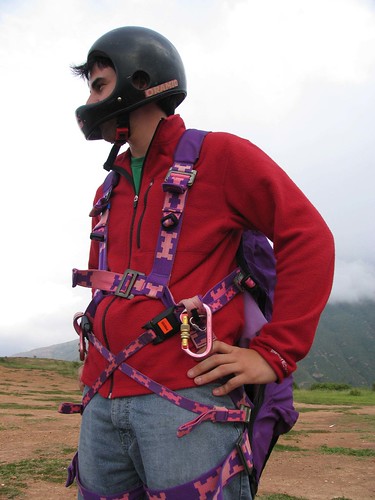Borderline crazy
There are ways to start vacations. There are ways to not start vacations. And if I’ve said it once, I’ve said it … well, once: Having communication problems at the Colombian border is not a way to start your vacation.
Initially, back when Fulbright was paying for the trip to Cartagena, we had thought about flying (in)direct from Mérida to Caracas to Bogotá to Cartagena before realizing that flying east to go west was not only stupid but also expensive. Since we were to pay for Brooke’s ticket, we decided to see more of the Venezuelan Andes by taking a bus to the Venezuelan-Colombian border, cross into the Colombian city of Cúcuta, and fly to Cartagena via Bogotá from there. It seemed easy enough.
We really haven’t learned anything here, have we?
The bus ride from Mérida to San Cristóbal, a small city an hour and a half from the border, turned out to be an indictment of Venezuelan infrastructure and disaster relief. Four months removed from intense flooding that wiped out several villages and left thousands homeless throughout the country’s Western Andes, the mountains’ major thoroughfare—the so-called Trans-Andean Highway—was a jolting mess of potholes and washed-out roads. The end of the dry season meant that the parched river beds were once again filling with water, which meant crossing 50-yard-wide streams while looking off in the distance at the twisted remains of steel bridges mangled during the flooding. It was a long ride.
We stayed in San Cristóbal with the intention of taking a bus to Cúcuta, or at least the Venezuelan border town of San Antonio de Táchira, the following day. When we arrived at the terminal early the next morning, we saw a group taxi service that brought you to Cúcuta for just around $2 a person. As we were putting our stuff into the trunk, two national guardsmen/cops rolled up and asked us where we were going. Um, Colombia? They asked us to bring our stuff to the office so they could check our bags. Standard procedure.
I could exaggerate the experience and go on and on about civil liberties, but the check was pretty routine, and I’ve heard enough horror stories from our Venezuelan friends to know that this was not treatment reserved for gringos. The guardsmen weren’t so sure about the daily vitamins I brought with me (“They’re not drugs,” I assured them), and they said they couldn’t search Brooke because there wasn’t a guardswoman there to do it. The whole situation was annoying, and a bit jarring if only because we haven’t had that experience here, but it basically went without a hitch. After a search and some questions about what we were doing in Venezuela, we went back through the terminal and jumped in the car. When asked if we were going directly to Cúcuta, I gave an immediate, smiling “¡Sí!” I liked the sound of direct.
The car was filled with three other people, but the ride through the green mountains was quiet. Soon enough we got to San Antonio, and we approached the big customs gate in front of the Simon Bolívar International Bridge, which connects the two countries. There was traffic, and Brooke and I started thinking about our flight at 11, but soon we were through the post and on the bridge. We crossed over and smiled at our accomplishment. We’d read so much about guerillas and paramilitaries and Pablo Escobar and American spraying of coca plants (and farmers) that we were excited at finally going to this strange, and at one time extremely violent, place. Brooke gripped our passports and readied them for the border officials. But we passed by the Colombian border control and kept right on going toward Cúcuta, 4 km away. Maybe, we thought, we take care of our documents at the bus terminal.
That, obviously, was not the case. When we finally mentioned stamping our passports to our driver in downtown Cúcuta, he looked at me funny. “But you said you were going direct to Cúcuta,” he said, plainly. I did, didn’t I …
The next hour was a blur. We were now really worried about the time, since it was 9:45 and we still didn’t have stamped passports. But we soon realized that we lost an hour in a border time-change, so we were a bit less stressed when we jumped in another cab and headed back to the border. It was, like the U.S.-Canadian border, an open one. That’s why we didn’t stop the first time—none of the other passengers needed to stamp anything or pay any tributes. We zipped through the streets of San Antonio until we reached the hidden offices of the DIEX, or border officials, and got our passports stamped and exit fees paid. We cut through traffic and hopped out in front of the DIAN on the Colombian side to take care of the border formalities there. And then we sped off to the airport, paid way more for transportation than we’d wanted to in the first place, and sat down, trying to forget what had just happened.
So far, our Colombian experience had mirrored our time in Venezuela: disorienting, frustrating, and at some level, highly comical. And we still hadn’t even gotten on our plane yet.


0 Comments:
Post a Comment
<< Home